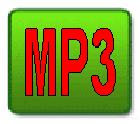 |
The Myth of the Broken Body of Jesus Christ |
Dear Brethren,
The Church of God’s use of the phrase, “the Broken Body of Jesus Christ,” has resulted in some misunderstandings. God uses symbols, analogies, types/antitypes, parables, and He compares and contrasts those representations—to bring us to a right and good understanding of His word.
Please understand that Jesus was not a broken man on the cross. The Romans and the Jews did not “Break Him.” None of His bones were broken. His resolve to do the Father’s will was never broken.
Someone who has been beaten into submission by life's adversities or has given up on trying to overcome obstacles is a broken man – but Jesus Christ was in all points tempted like as we are, yet without sin (Hebrews 4:15). He was not broken in any sense of the word. Christ’s flesh was torn, and His skin was broken—but not His will, character, body or bones. Saddam Hussein and Hitler both died broken men, but Jesus died at the ‘top of His game.’ Jesus was victorious – even in death – never having been defeated. The Bible reveals that Jesus held his head upright and erect until He breathed His last breath (John 19:30). Jesus willingly lay down His life – no one took it from Him.
“No man takes it from me, but I lay it down of myself. I have power to lay it down, and I have power to take it again. This commandment have I received of my Father.” (John 10:18)
The Bible manuscripts indicate that Christ's body was not broken. The King James translators, not realizing the significance of Jesus’ bones remaining unbroken (Exodus 12:46), incorrectly embellished the Greek text of 1 Corinthians 11:24. They added the words “which is broken” to the following verse – that are not in the original inspired text:
"The Lord Jesus . . . took bread: and when He had given thanks, He broke it, and said, take, eat: this is My body, which is broken for you: this do in remembrance of Me." (1 Corinthians 11:23-24)
That is not what the Greek says in those verses. That is an unfortunate translation. Paul words were not translated properly. Jesus did not say, “This is my body, which is broken for you.”
What is the correct translation? This is how the scripture should be correctly rendered according to E. W. Bullinger author of The Companion Bible:
"The Lord Jesus . . . took bread: and when he had given thanks, he brake it, and said, this is My body, for you: this do in remembrance of Me." (1 Corinthians 11:23-24)
The Greek, ‘klao,’ used in this verse, means only "to break bread," as in the miracle of the loaves and fishes. This word is never used in the sense of breaking bones. It always means to have a meal as the saints did. Look at how Luke is translated correctly in this Passover dialogue:
“He took bread, and gave thanks, and brake it, and gave unto them, saying, This is my body which is given for you: this do in remembrance of me.” (Luke 22:19)
Jesus was beaten with many stripes. He had His beard torn, He was punched, tortured with thorns, He was crucified, and He died – but His bones were not broken.
“When they came to Jesus, and saw that he was dead already, they broke not his legs: But one of the soldiers with a spear pierced his side, and forthwith came there out blood and water.” (John 19:33-34)
It was a Messianic Prophecy of old that Jesus Christ’s bones would not be broken.
“For these things were done, that the scripture should be fulfilled, A bone of Him [Jesus Christ] shall not be broken.” (John 19:36)
Jesus is the Lamb of God. The Passover lamb was not to have any of its bones broken.
“In one house shall it be eaten; thou shalt not carry forth ought of the flesh abroad out of the house; neither shall ye break a bone thereof.” (Exodus 12:46)
Jesus shed His life’s blood so that our sins would be forgiven – but in no sense was His body broken. God went to great lengths to prophesy about the bones of Jesus. It was told that Jesus would receive "stripes," but none of His bones would be broken. Jesus is clearly the fulfillment and antitype of the Passover lamb. David was inspired by Christ to give us another Messianic Prophecy:
"He keeps all His bones: not one of them is broken." (Psalms 34:20)
Scripture reveals that we, the saints of God, the Church of God, are represented by the bones of Jesus Christ. "For we are members of His body, of His flesh, and of His bones." (Ephesians 5:30)
***
| Sermon: |
"The Myth of the Broken Body of Jesus Christ" |
 |
 |
 |
| 